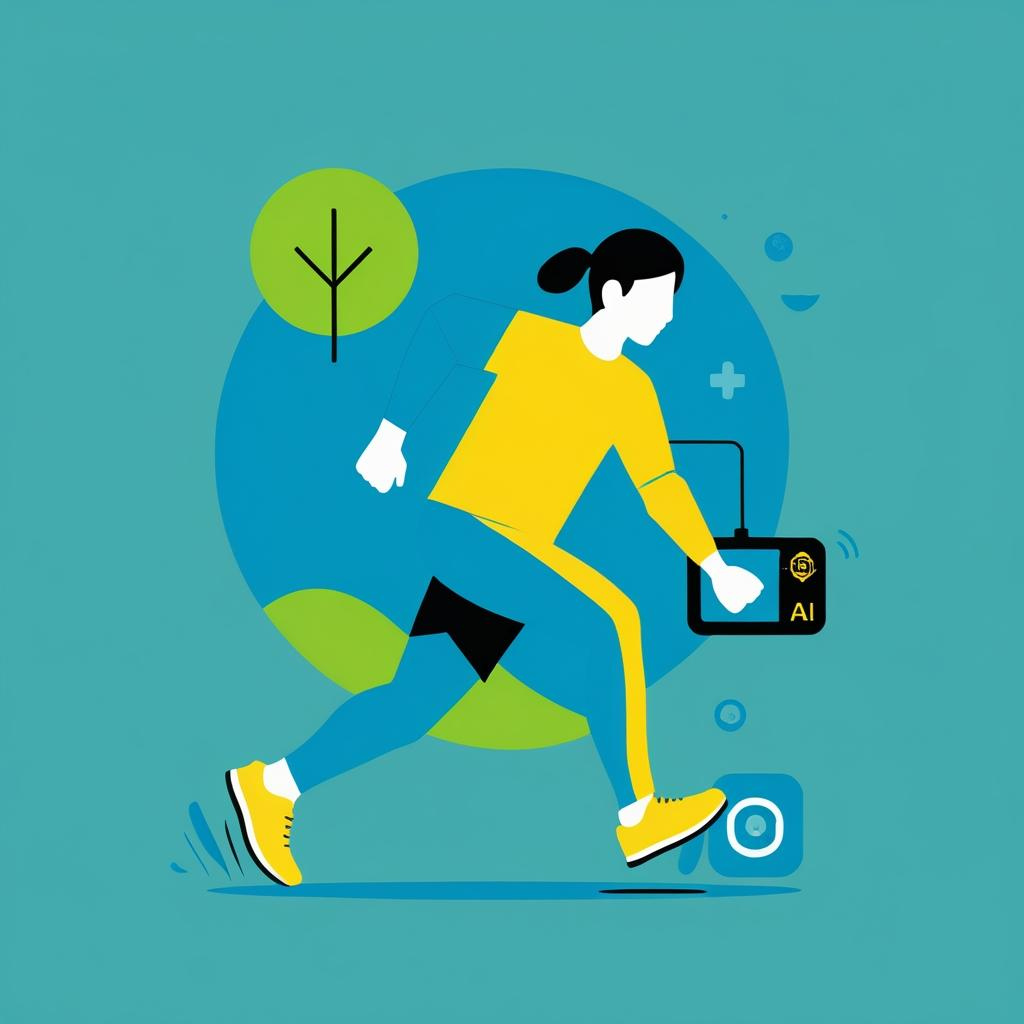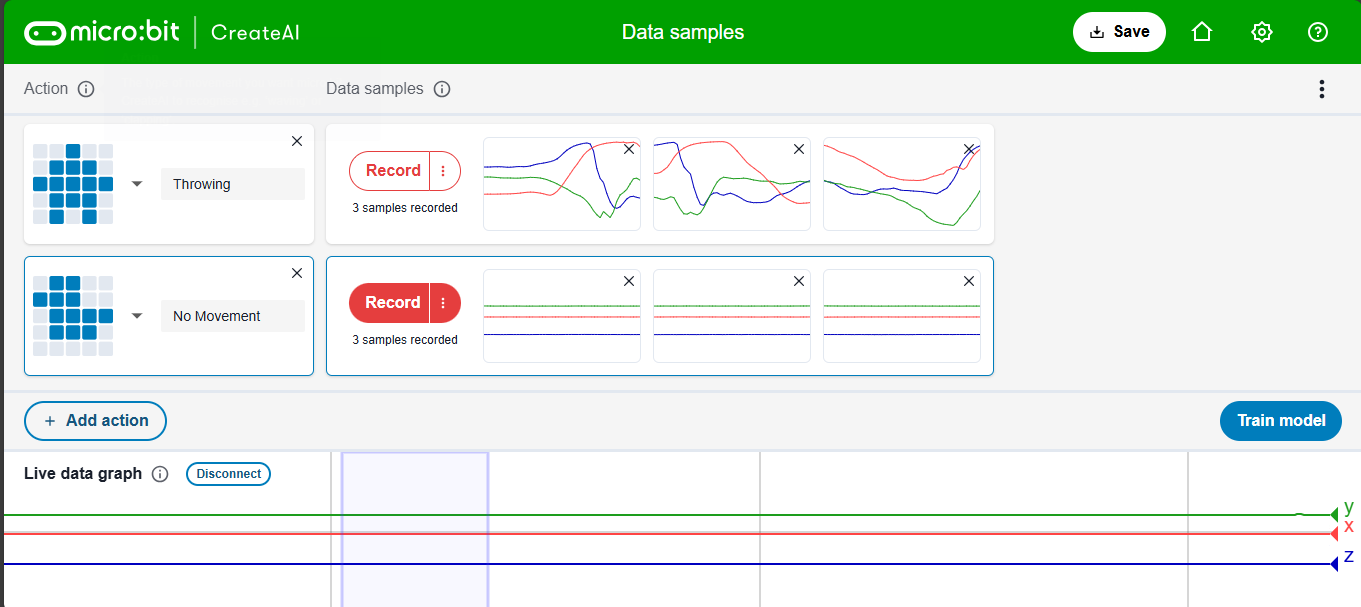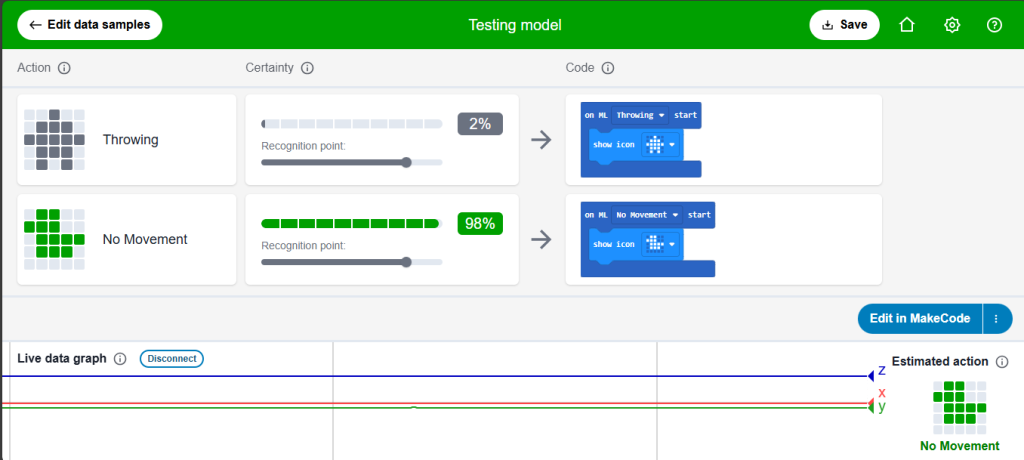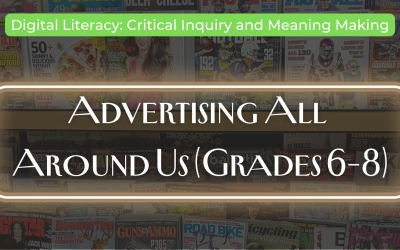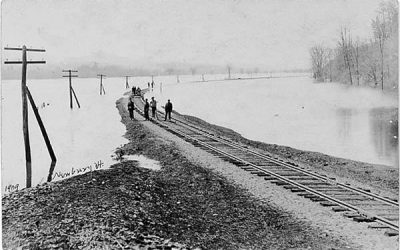
Activity image generated with Canva AI
Overview
The activity involves using micro:bit CreateAI to train a machine learning model to recognize specific movements when engaged in a physical activity (i.e. dribbling or shooting when playing basketball, shooting or passing a puck in hockey, spins or jumps while dancing). Learners will then use the machine learning model to develop a prototype SmartCoach to support building technique, accuracy, teamwork, etc.
If you are a New Brunswick teacher who is unfamiliar or new to micro:bits and Microsoft MakeCode, please email COE@gnb.ca for support with learning more or accessing micro:bits and its accessories. You may also want to explore this asynchronous course on the New Brunswick PLHub: Introduction to Micro:Bits
NB Curricular Connections
6-9 Technology
- Strand: Design Thinking Skills
- Big Idea: Problem Solving
- Skill Descriptor:
- Plan, execute and present a project within given parameters and with assistance.
- Plan, execute and present a project to address a need or problem.
- Strand: Information Technology Skills
- Big Idea: Devices
- Skill Descriptor: Integrate sensor input, computational algorithms, and output devices.
- Strand: Information Technology Skills
- Big Idea: Computational Practice
- Skill Descriptor:
- Apply basic coding skills to solve problems.
- Apply algorithmic functions in code to solve problems.
6-8 Physical Education
- Strand: Skills and Concepts
- Big Idea: Movement
- Skill Descriptor: Refine movement concepts with a variety of activities alone and with others.
What You’ll Need
-
micro:bit v2
-
micro:bit CreateAI (https://createai.microbit.org/)
-
Laptops or iPads with internet access
-
Sports equipment (relative to chosen physical activity)
-
Chart paper or whiteboard
-
Digital or analog options for journaling/reflection
Instructions
Part 1: Model Training (30 min)
-
- Discussion: How could AI change how we play sports in the future? What benefits and/or issues could arise?
-
Choose a Movement: In teams, learners choose one motion to model (e.g., dribble, shoot, pass).
-
Data Collection: Use micro:bit accelerometer via CreateAI to collect three 3-second samples of their selected movement. Classify as “Movement”. Train a 2nd classification called “No Movement” where the micro:bit is stationary.
-
Model Training: Train the model to recognize selected movements using CreateAI’s interface. Aim for 90% accuracy or higher.
Part 2: Testing/Iteration (30 min)
-
-
Activity: Using the trained model, test it’s accuracy on other people. Does it still work?
-
Discussion: Note any misclassifications. Why might they have occurred? What affects accuracy?
- Model Training: Retrain the model to better recognize movements by removing and/or adding new data. Aim for 90% accuracy or higher when used by 2 or more people.
-
Part 3: Reflection
-
Discussion: What helped your model get better? More data? Different data from different people?
What responsibility do we have when designing AI for people’s bodies? - Exit Ticket (1 sentence each)Technical: “One way we could improve our model is…”Ethical: “One risk of AI analyzing movement is…”
Part 4 (Extention): Application
-
-
-
Option A – Build a Smart Coach: Attach your micro:bit to your wrist and track correct technique during practice (e.g., count accurate basketball shots).
-
Option B – Create an Alert System: Use the model to send a message or light up an LED when a movement is recognized (e.g., puck pass = green light). Compare attempts to accuracy of the attempt.
-
-
Career Connections
This activity aligns with the technology, AI, and sports industries in New Brunswick, fostering skills relevant to careers in data science, sports medicine, and machine learning. To connect with someone from one of these industries or careers, email COE@gnb.ca.
-
Sports Analytics
-
Physiotherapy and Biomechanics
-
AI & Data Scientist
-
Wearable Technology Engineering
-
Game Development / eSports
Extension Ideas
-
Math/Data: Graph the prediction success rate.
-
ELA/Media: Create a PSA or video on how AI is changing sports.
-
Health/Science: Link movement analysis to injury prevention in athletics.
-
Collaboration: Have students team up to build a “multi-move” AI coach with multiple inputs.
Related Digital Literacy Competencies
-
Computational Thinking – Breaking movements into data points; training models
-
Critical Inquiry – Evaluating model performance and accuracy
-
Creativity & Design – Building custom use cases (smart coach, alert system)
-
Communication & Collaboration – Working in teams to train and test AI
-
Digital Citizenship – Ethical considerations in AI decision-making
- Digital Health and Wellness – Exploring technology as a tool for health, wellbeing, and injury prevention
Reflection Tools
Please see the attached PDF for several choices on how you and your learners can reflect upon today’s activity.
